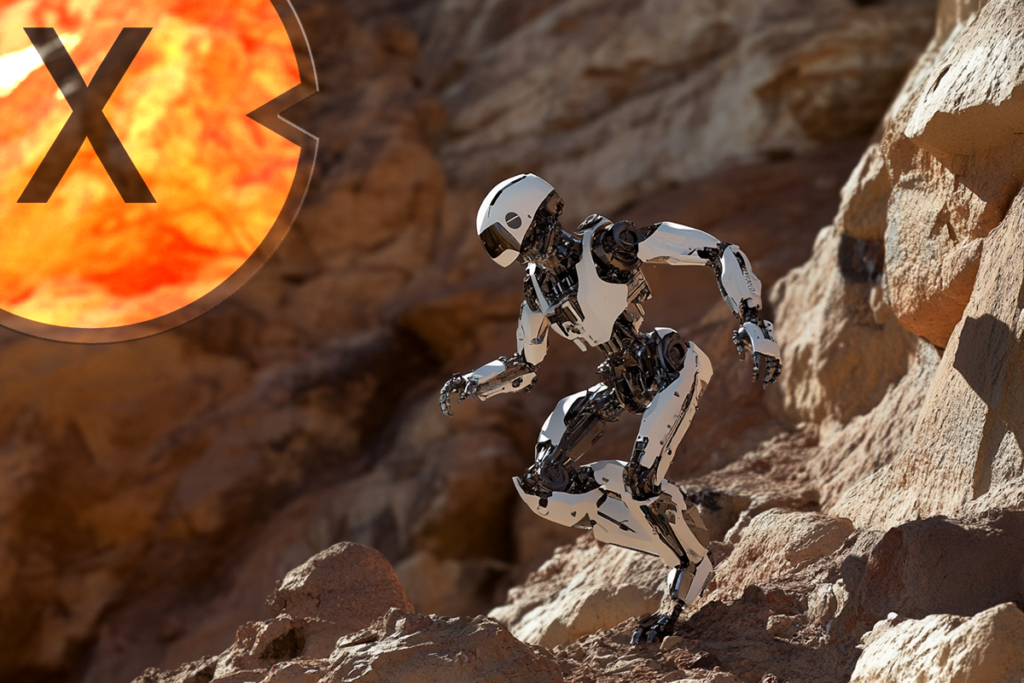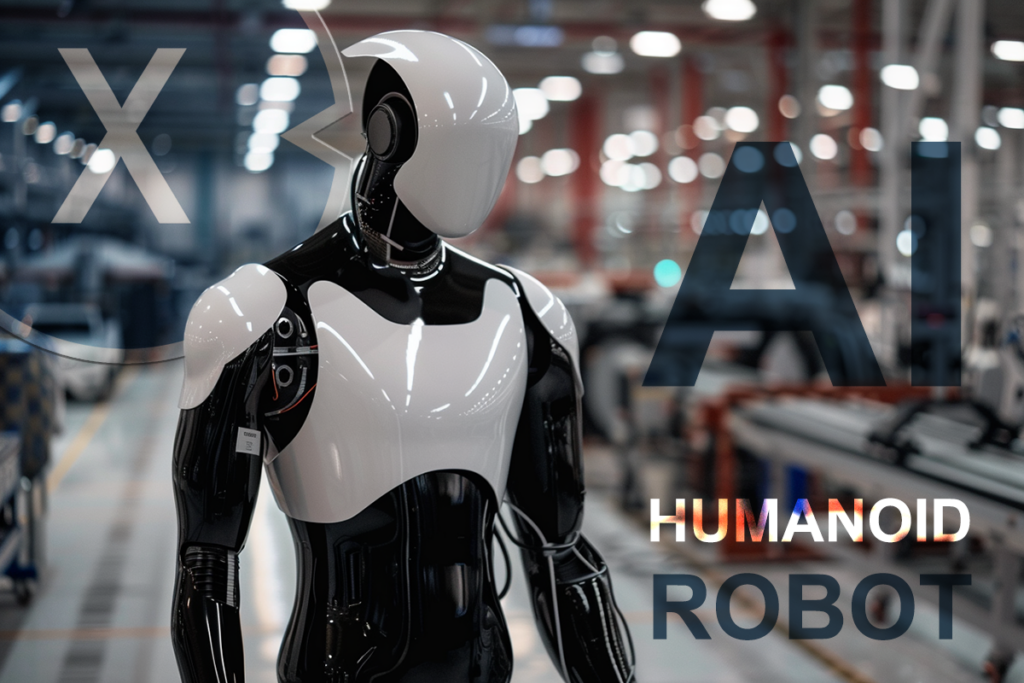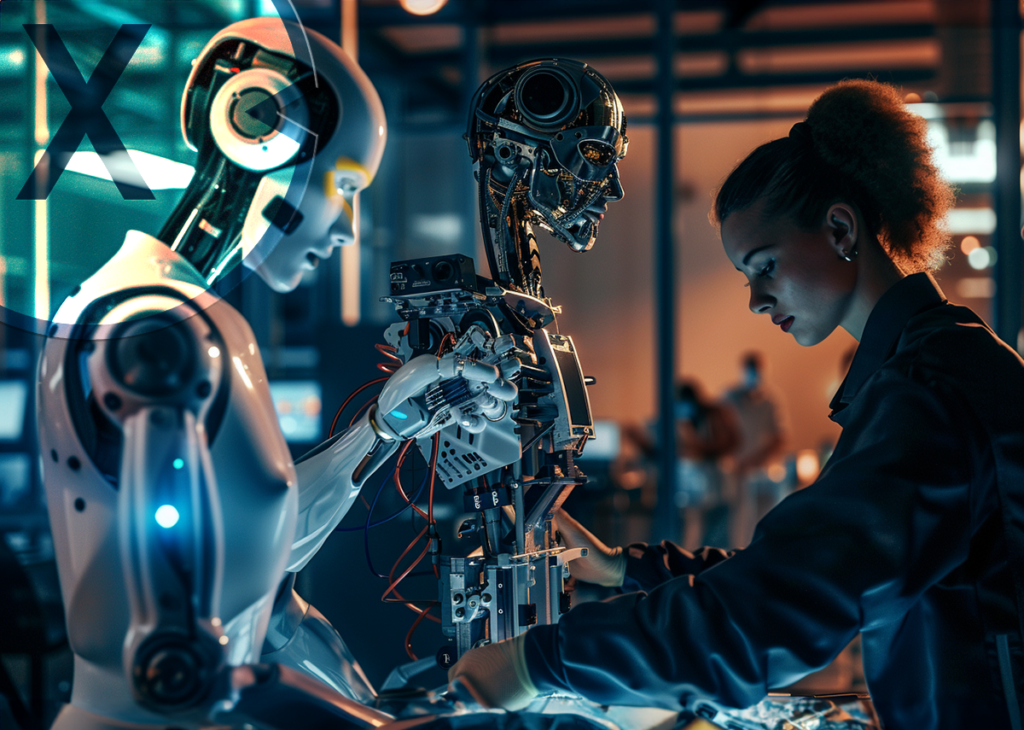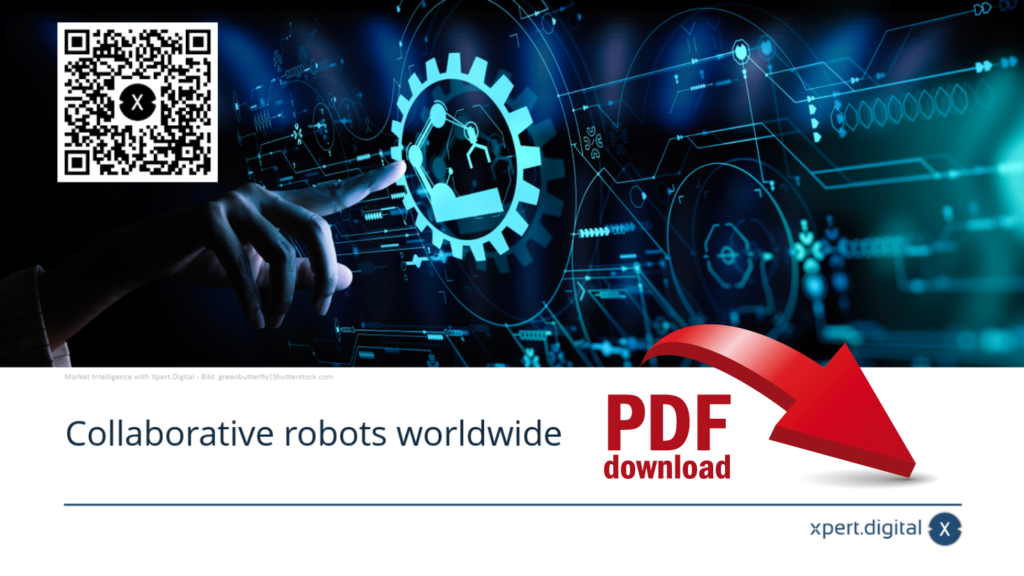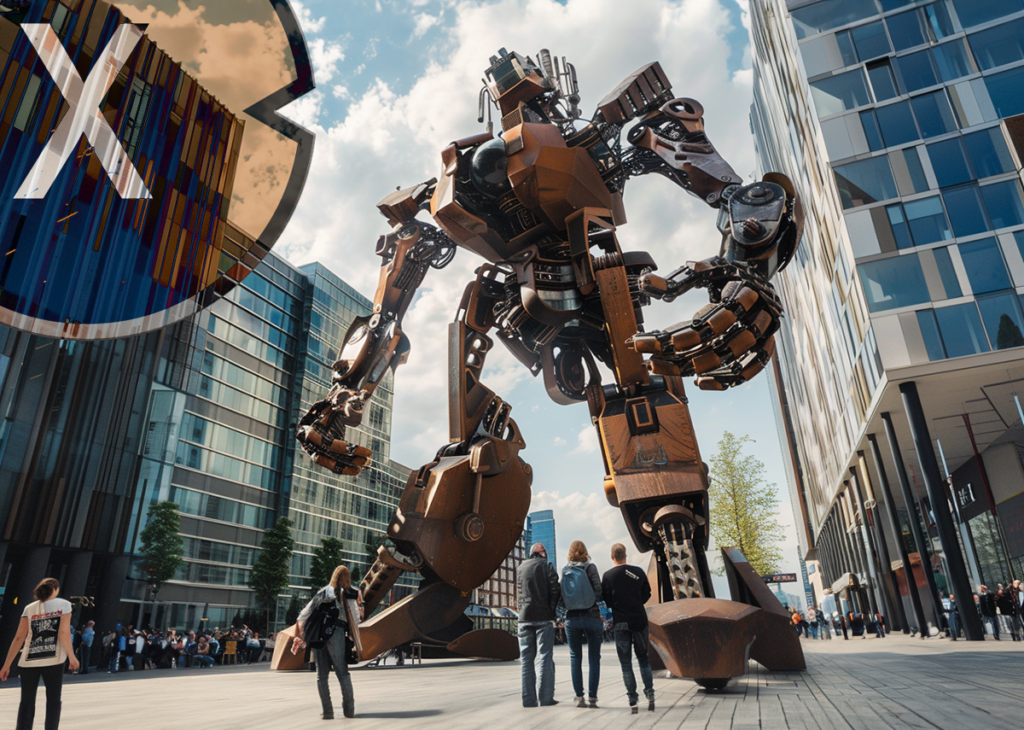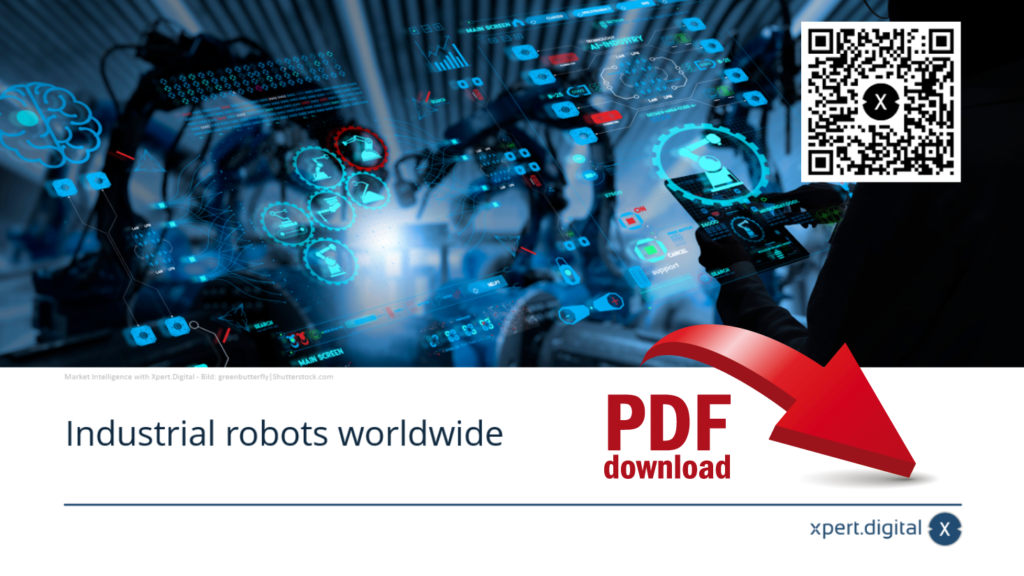Published on: November 6th, 2024 / Update from: November 6th, 2024 - Author: Konrad Wolfenstein
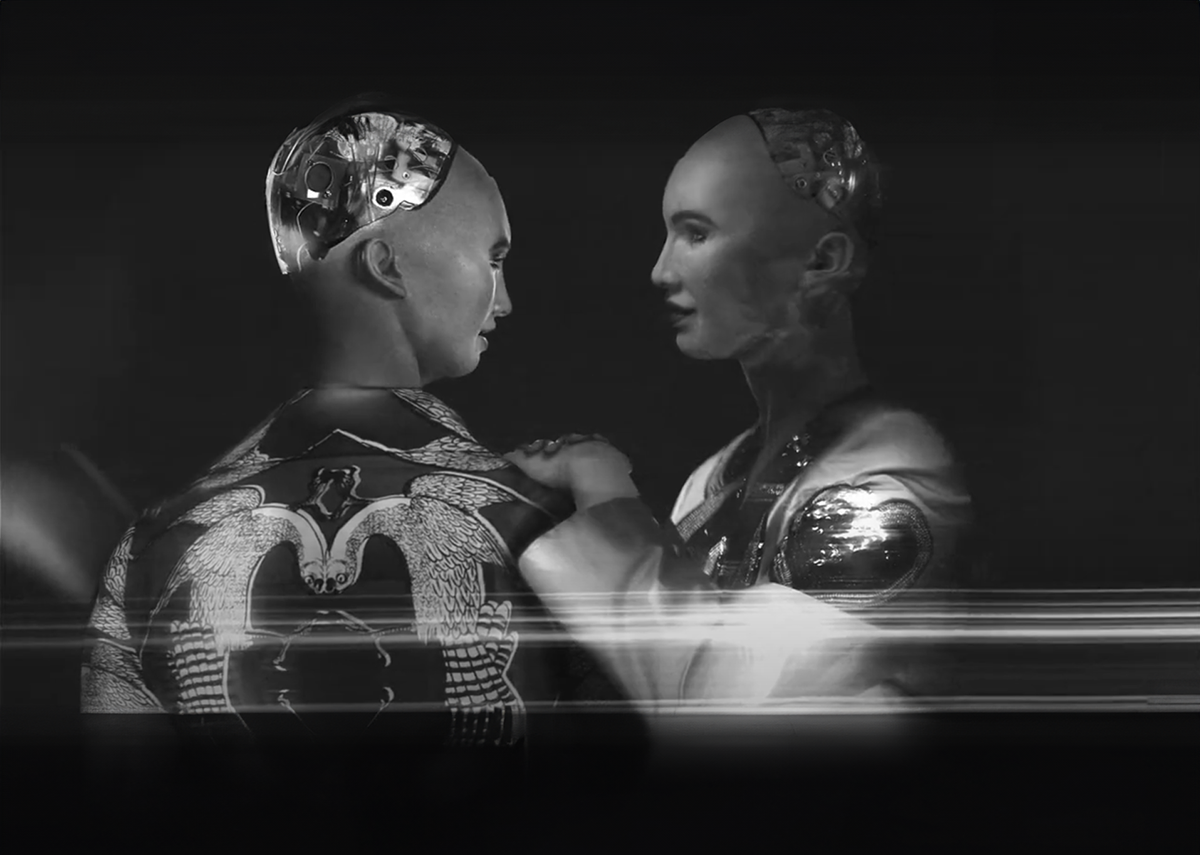
Sophia, developed by Hanson Robotics, is one of the most advanced humanoid robots in the world - Image: Xpert.Digital
Human Facial Expressions: Sophia's impressive abilities
Education and entertainment: possible uses of Sophia
Sophia, developed by Hanson Robotics, is one of the most advanced humanoid robots in the world. She was activated on February 14, 2016 and is known for her human-like appearance and ability to interact with humans. Sophia can mimic human gestures and facial expressions and carry on simple conversations. It is designed to be used in various areas such as education, entertainment and research, especially to explore the interaction between humans and robots.
Technology and skills
Sophia uses a combination of artificial intelligence (AI), machine learning, computer vision and speech recognition to understand her surroundings and communicate with people. Her facial recognition and speech processing allow her to recognize faces and conduct conversations in real time. Sophia's AI is based on a hybrid system that combines both autonomous and scripted responses. This allows her to respond to a variety of topics, including art, science and current events.
Sophia has over 60 different facial expressions that she can display using a patented artificial skin system. Her movements are also advanced: she has 74 degrees of freedom in her body, giving her high mobility. Her hands can carry loads of up to 600 grams and she can navigate rooms independently.
Public appearances and notoriety
Sophia achieved international fame through numerous media appearances and conferences. She has appeared on television shows such as The Tonight Show and has been featured in prestigious media outlets such as The New York Times and Forbes. Particularly notable was the awarding of Saudi citizenship in October 2017 - a historic event as she was the first robot in the world to receive this honor. Shortly thereafter, she was named an Innovation Ambassador for the United Nations Development Program.
Areas of application
Sophia was designed to serve as a platform for research into human-robot interactions. It is used in areas such as elder care, customer service, and educational and entertainment applications. Its developer David Hanson sees Sophia as a way to advance the social debate about AI ethics and show the potential of humanoid robots.
Criticism and future perspectives
Although Sophia possesses impressive abilities, she remains a machine with no real consciousness or emotions. Her interactions are based on pre-programmed algorithms and machine learning, meaning she has no real empathy or self-awareness. Nevertheless, it is considered a symbol of progress in robotics and AI research and could significantly influence future developments in these areas.
Sophia remains a fascinating example of how far technology has already advanced when it comes to human-like robots - both technically and socially.
Suitable for:
- The top ten of the most famous and famous humanoid robots: from Atlas, Sophia, Ameca, Digit, GR-1 to Phoenix to Optimus - creative image: Xpert.Digital
- The latest advances in humanoid robotics and the potential for future applications in various industries - Creative image: Xpert.Digital
- The success of a robotics project depends on the collaboration of robotics and artificial intelligence (AI) specialists - Image: Xpert.Digital
- Collaborative robots worldwide – PDF Download
- German economy: Robotics and automation halves growth forecast – China sets its sights on Europe – Germany needs speed – Image: Xpert.Digital
- Industrial robots worldwide – PDF Download
Sophia from Hanson Robotics
Sophia is one of the most famous humanoid robots in the world, developed by the Hong Kong-based company Hanson Robotics. Since its introduction in 2016, it has attracted worldwide attention and is considered a milestone in robotics and artificial intelligence. She is best known for her extremely human appearance as well as her ability to hold natural conversations and show emotional reactions.
Development and design
Behind Sophia is the founder of Hanson Robotics, Dr. David Hanson, whose vision is to create robots capable of interacting with humans in a natural and intuitive way. Sophia features realistic silicone skin that supports her human appearance. Her facial features are a combination of features of actress Audrey Hepburn and Hanson's own wife, giving her a familiar and appealing appearance.
Her facial expressions are made possible by a complex system of actuators and motors that allow her to display over 60 different facial expressions. This ability helps her convey emotions such as joy, sadness or surprise, which facilitates and deepens interaction with people.
Artificial intelligence and skills
Sophia's ability to hold conversations is based on advanced artificial intelligence, natural language processing and machine learning. Not only can she provide predefined answers, but she can also learn from interactions and continually improve her communication skills. By using speech recognition technologies, she understands spoken language and can respond appropriately.
In addition, she is able to recognize faces and interpret emotions in the faces of those she is speaking to. This ability allows her to be sensitive to people's feelings and react accordingly, which is very important in social interactions.
International recognition and controversy
A significant milestone in Sophia's career was being granted Saudi Arabian citizenship in 2017, making her the first robot ever to be granted citizenship. This event made headlines around the world and sparked numerous discussions about the rights of robots and the future relationship between humans and machines.
Critics pointed out that Sophia appears to have more rights than some people in Saudi Arabia, particularly women and guest workers. This led to debates about human rights and the ethical implications of robotic technology. Saudi Arabia's decision was symbolic and intended to demonstrate the country's openness to technological innovation, but it was met with mixed reactions.
Appearances and influence
Sophia performed at numerous international conferences, trade fairs and on television shows. She was a guest in programs such as “The Tonight Show Starring Jimmy Fallon” and had interactive conversations with celebrities and experts on stage. Their appearances often serve to demonstrate the potential of artificial intelligence and to sensitize the public to the progress in robotics.
Through her media presence, Sophia has a significant influence on the public perception of AI and robots. It stimulates discussions about the role such technologies will play in our society and the opportunities and challenges they bring.
Ethics and the future of AI
Sophia often speaks on topics such as artificial intelligence, ethics and the future of humanity. She emphasizes the need to develop AI to serve people and make positive contributions. Their developers at Hanson Robotics aim to create robots that can be used as helpers in areas such as education, healthcare and customer service.
However, Sophia's existence also raises important ethical questions. How should robots be treated legally and morally? What responsibility do developers and companies have when designing AI systems? And how can we ensure that the integration of robots into our society is for the benefit of everyone?
Technology behind Sophia
Sophia's technological base includes a combination of hardware and software that allows her to interact with her environment in a variety of ways. Its artificial intelligence is powered by cloud-based learning, meaning it can access extensive databases and computing resources to expand its capabilities. This allows her to have complex conversations and learn from new information.
The movement of her facial muscles is controlled by a patented mechanical system developed by Hanson Robotics. This system allows her to produce subtle facial expressions that are crucial to human interactions. Their eyes contain cameras that can recognize faces and make eye contact, making communication more natural.
Rights and legislation
The question of the rights of robots is a topic that Sophia has brought into greater focus. Some philosophers and ethicists debate whether sentient machines, should they one day exist, would need legal rights and protections. Although Sophia does not currently possess consciousness in the human sense, her existence raises questions about how we should deal with increasingly autonomous machines.
Saudi Arabia's decision to grant Sophia citizenship has fueled this debate. The question arises as to whether robots should be entitled to civil rights in the future and how laws need to be adapted to keep pace with such developments.
Pop cultural significance
Sophia has also left her mark on pop culture. She has been featured in various media formats including magazines, television shows and documentaries. Her presence has increased public interest in robots and AI, making her something of an ambassador for these technologies.
Through her media presence, Sophia has contributed to increasing the acceptance of robots in society. It serves as a symbol of advances in robotics and encourages people to consider the impact of these technologies.
Critical voices and skepticism
Despite the fascination that Sophia causes, there are also critical voices. Some experts argue that Sophia should be viewed more as a marketing tool than a scientific breakthrough. They emphasize that the portrayal of their capabilities in the media is often exaggerated and gives an unrealistic picture of what AI can currently achieve.
There is a risk that such representations lead to inflated expectations that cannot be met, which could ultimately lead to disappointment and mistrust of AI technologies. It is therefore important to educate the public about the actual possibilities and limitations of AI.
The role of Hanson Robotics
Hanson Robotics positions itself as a pioneer in the development of social robots. The company aims to create robots that are not only functional, but can also build emotional connections with people. Through projects like Sophia, the company aims to bridge the gap between humans and machines and enable new forms of interaction.
Impact on education and research
Sophia also serves as a source of inspiration for students and researchers in the field of AI and robotics. Their existence motivates young people to engage with these issues and potentially pursue careers in these fields. It helps to promote interest in the MINT subjects (mathematics, computer science, natural sciences and technology).
Future developments
In the future, robots like Sophia could be used in various fields, including education, healthcare and customer service. They could serve as assistants, providing personalized support and taking on tasks that are monotonous or dangerous for humans.
The advancement of AI and robotics will likely result in robots becoming increasingly intelligent and autonomous. This opens up opportunities, but also presents us with new challenges in terms of ethics, safety and social impact.
Development of humanoid robots and artificial intelligence
Sophia from Hanson Robotics represents a significant step in the development of humanoid robots and artificial intelligence. Their ability to recognize and respond to human emotions and their human-like appearance open up new possibilities for human-machine interaction.
While it evokes admiration for technological advances, it also reminds us of the important questions and challenges that come with integrating AI into our daily lives. It is up to us to develop and use these technologies responsibly to create a positive future for everyone.
Sophia is more than just a technological marvel; it is a catalyst for discussions about the future of humanity in a world where AI and robotics play an increasingly important role. She embodies both the hopes and fears associated with these technologies.
It is crucial that we approach these developments carefully, taking advantage of the opportunities while minimizing the risks. The debates stimulated by Sophia are an important step on this path.
Matches:


